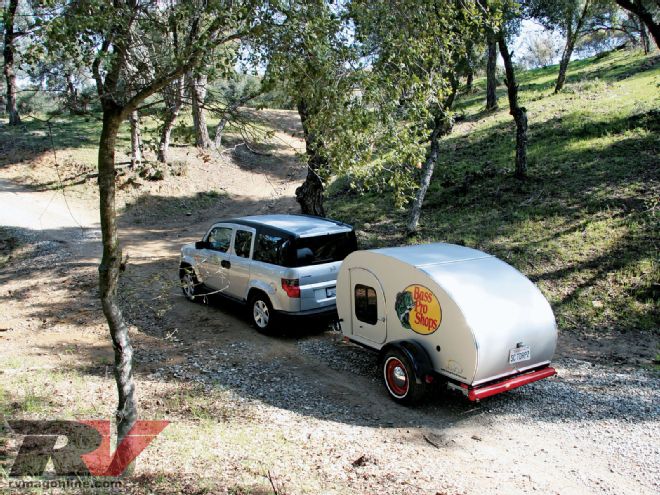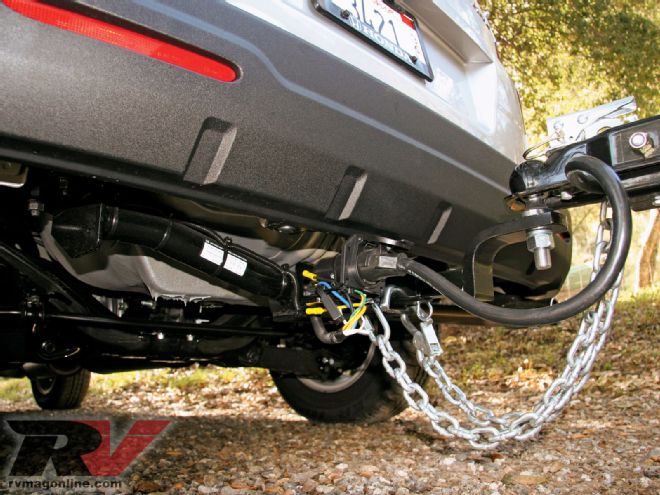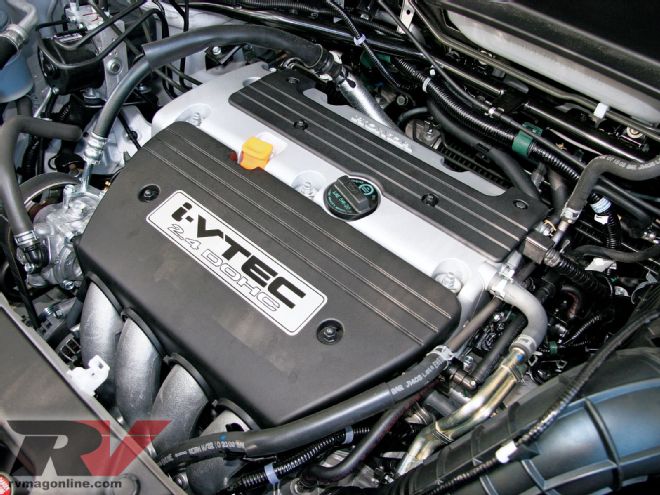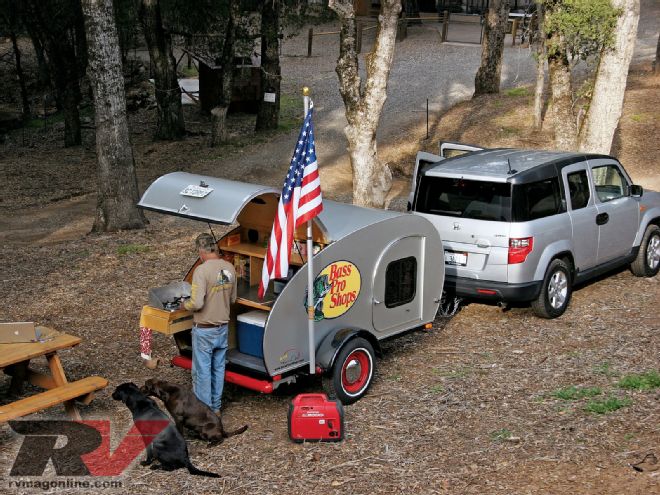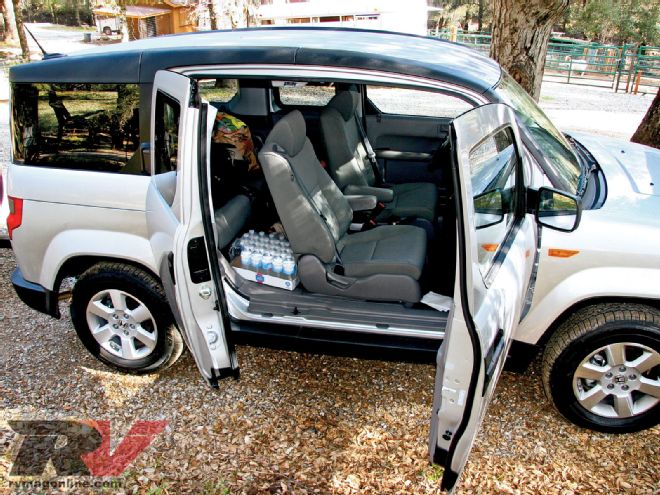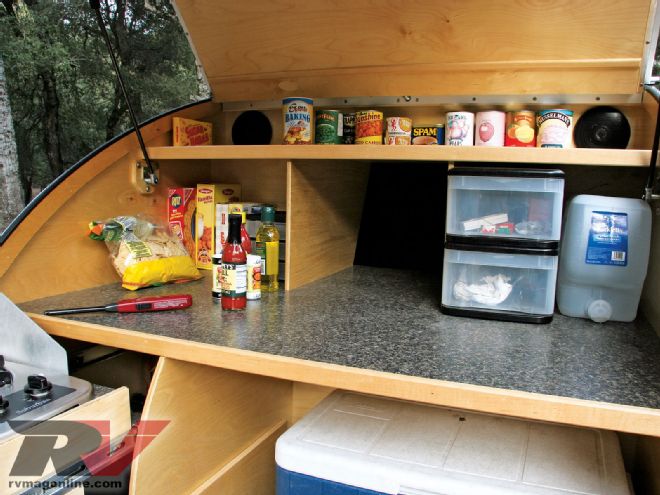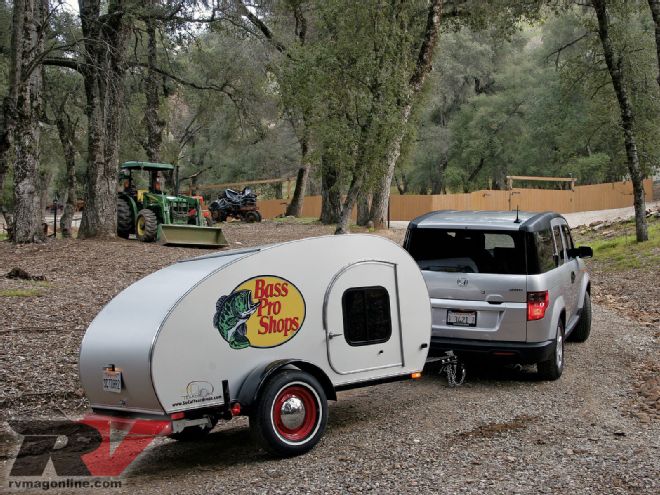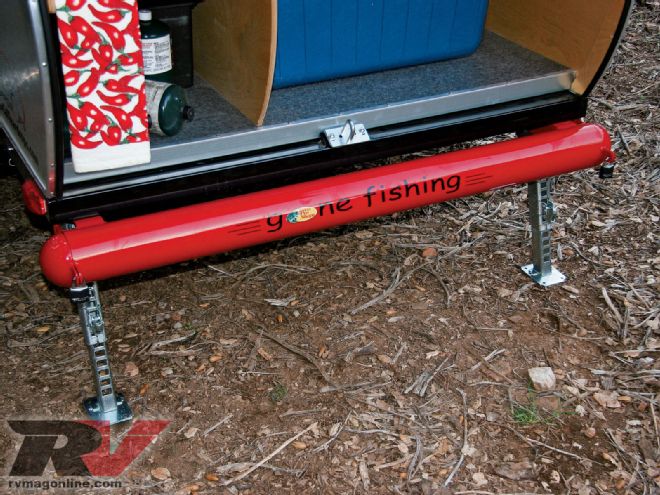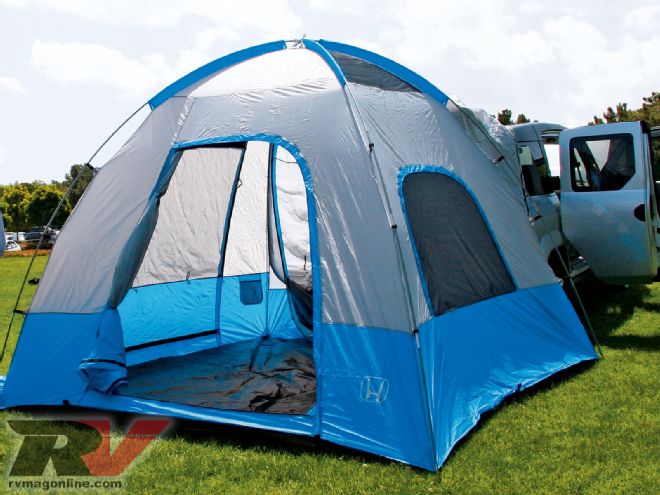It has a curvaceous body, is light on its feet, and is an affordable companion for weekend getaways. We're talking about the teardrop trailer of course. Although some details to its origin remain sketchy, Louis Rogers of Pasadena, California, is often credited with being the first to introduce the unique teardrop concept in a 1939 issue of Popular Homecraft magazine.

| As it turned out, the wait to find a hand-built teardrop was over the moment we met Mike Pari and his son Gabe of SoCal Teardrops. We knew we had come to the right place. The SoCal Teardrops' Rover on site at the Raney Ranch.
By the 1940s, a similar design became the Kit Kamper trailer, and America's love affair with the teardrop took off. Its popularity continues to this day.
Finding an original teardrop from that era is proving more difficult as time passes, and restoring one is anything but easy or cheap. However, there are several manufacturers in the U.S. that are spinning off turn-key designs inspired by the original teardrop trailer, and the ones we've seen are mostly quite good. If you're inclined to build your own, there are teardrop plans and kits available, too.
What we learned in researching this story is that not all new teardrops are built the same way. The materials and workmanship vary from manufacturer to manufacturer, so it pays to ask around or get in contact with a teardrop user group before making a buying decision.
We learned about a father and son team from Upland, California, that has been manufacturing teardrop trailers the old fashioned way for nearly a decade, so we decided to pay them a visit. Knowing that we've seen more than our share of duds and dead-ends, we crossed our fingers and hoped for the best. What we got was a look at a completely hand-built version of the teardrop trailer.

| The Element EX is an ideal runabout for low-impact stays, and it can get in and out of tight sites with relative ease.
As it turned out, the wait to find a hand-built teardrop was over. The moment we met Mike Pari and his son Gabe of SoCal Teardrops, we knew we had come to the right place. Both are veteran finish carpenters, and the business sprang from an initial one-off design they built on a whim.
" My dad was an artist and doing quite well, and I'd been a craftsmen working with wood, plastic, and every type of material for years. Then about eight years ago, we met a fellow in Sequoia National Park who had a trailer, and we really thought it was cool. It was a teardrop design," Gabe says.
"So we took pictures and asked the guy what he thought about it. The guy said he was bombarded constantly by people wanting to know more about it, so on the way home we decided to build one just to see if we could do it," he adds.
"It sold immediately, and that got us started. Our design is not a rehash of the original scribbled on a piece of paper-the entire design is created from the ground up using modern conveniences that are incorporated for more than aesthetics."
With a degree from Cal Poly Pomona in material engineering and a degree in mathematics under his belt, Gabe, along with his father, has put a lot of years of experience into each and every trailer that leaves the tidy facility in Upland, and they have been able to produce about 30 to 50 teardrops per year. Each trailer that leaves their facility is built to order and pricing starts at about $7,000 for a bare-bones model.
After a brief tour, we hooked up the smallest of their models, called the Rover, and treated ourselves to a weekend in the wilds. Yes, it was small, no bigger than a twin bed inside, but you don't feel like a sardine in a can. Rather, it makes one feel nostalgic.

| The fit and finish of SoCal trailers is among the best we've seen.
We headed to a 120-acre ranch in San Diego, California, owned by Steve Raney, a professional hunting dog trainer. We often visit the Raney Ranch because of its pristine views of a nearby lake and surrounding mountain range, which is still as rugged today and it was 100 years ago.
The main difference between a teardrop-style trailer and a conventional trailer is size, and this particular Rover could be pulled by something as small as a four-cylinder passenger car. So, we hitched it up to a 2010 Honda Element and took off for a few days of relaxation high above the city noise.
Honda Element
The reason for the 4WD Element EX was simple: It too is a very functional and affordable vehicle in the outdoors and lends itself to camping with plenty of interior cargo space, folding seating that allows for sleeping, Real Time four-wheel drive, and even a Honda tent (optional) that attaches at the rear of the vehicle.
The Element EX (priced in the low to mid $20,000 range) is an ideal runabout for low-impact stays, and it can get in and out of tight sites with ease. Its side doors swinging out a full 90 degrees, the Honda Element offers plenty of unloading and loading options for the camper on the go. There are also 64 different seating configurations.
Towing prowess is about what you'd expect: a mere 1,500 pounds maximum. But considering that the Element EX was towing a SoCal teardrop that weighed just over 900 pounds, it wasn't a big deal (trailer tongue weight was 150 pounds). The Element's in-line four-cylinder engine puts out 166 hp at 5,800 rpm, more than enough to tow a light trailer like the teardrop. It also has a five-speed automatic transmission, which offers smooth acceleration and trouble-free driving in loose-dirt situations like we encountered at the ranch.
Another reason we liked the Element is that the seating can be removed for sleeping. It was so easy, and the effect was so dramatic and like no other van in its class that we've test-driven of late. It even has a portable cooler built in between the front two seats that holds about a six-pack worth of beverages.
Perfect Camp Companion
The Rover was one sweet piece of work, and it fit us to a tee. It came with a practical two-burner propane stove and plenty of storage areas tucked under the rear galley lid. We could see the meticulously crafted assembly in every detail.
The single-axle Rover can be outfitted with many accessories like a propane/electric fridge, TV, and more. Our unit was simple and had a stereo, a foam mattress that sleeps two, interior lighting, and dual entrance doors with sliding windows that allow for air circulation when the weather gets hot. Other teardrop designs by SoCal are roomier and offer air-conditioning as an option.
The Rover has a seven-pin connector, spare tire, and on-board battery to run the appliances. Of course, you can plug in your generator to keep things charged, too. We brought along our Honda generator just for good measure and enjoyed a fine dinner, shared some tales, and got a good night's rest.
The Drive
Together, the fuel-efficient Element EX and the aerodynamic SoCal teardrop make for a roaring good time on the cheap. We were able to careen the hilly roads of this ranch with relative ease and never worried about how narrow the road became or even how twisty it got. In fact, we couldn't even feel the 900-pound trailer behind us most of the time.

| A spare tire and on-board battery were enough to get the Rover anywhere we wanted to camp for the night.
At night, the small Rover became a warm and comfortable place to get some shut-eye; however, restless sleepers or a family of three might want to opt for a larger model. Teardrops are not for large families; they are designed for light camping, and if you are creative like we were the tow vehicle can also be transformed into a place to sleep or for storage.
The Element's tent option is a nifty idea that allowed us enough room for another 3 or 4 people to camp together. All in all, the time we had at the ranch served to remind us how much we miss when we take simplicity out of the picture and simply go camping to bring along a ton of conveniences.
To see more on the teardrop trailer and the Element EX that we used on our weekend trip, log onto www.rvmagonline.com, and check out the videos.
